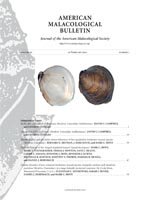Comparative studies of egg size and larval morphological characteristics coupled with estimates of dispersal abilities enabled Kohn and Perron (1994) to predict attributes of geographic distribution patterns of Indo-West Pacific Conus species that vary widely in developmental mode. However, because at that time, no species-level phylogenetic hypothesis had ever been proposed for Conus, we were constrained to treat each species as an independent entity. During the past decade, however, molecular phylogenetics of Conus has progressed to the point where character mapping and the method of phylogenetically independent contrasts can evaluate the importance of phylogenetic relatedness to biogeographic patterns. Analyses of species in two well-supported clades with data on ranges of trait variations suggest that significant evolutionary associations remain among developmental traits that affect dispersal ability after accounting for phylogenetic relationships. These are clades of molluscivorous and piscivorous Conus species, both exclusively in the Indo-Pacific region. As yet inadequate data on both development types and biogeography exist to determine whether phylogenetic relatedness predicts biogeographic patterns elsewhere in this hyperdiverse genus.
How to translate text using browser tools
1 February 2012
Egg Size, Life History, and Tropical Marine Gastropod Biogeography
Alan J. Kohn
ACCESS THE FULL ARTICLE
Conus
geographic range
independent contrasts
larval development
phylogeny





